In the U.S. educational system, students are typically introduced to algebraic concepts gradually, with formal algebra instruction beginning around Grade 7 or 8 (ages 12-14), depending on the school district and the student’s ability level.
- Grade 6 (11-12 years old): Students may start with basic pre-algebra concepts, such as understanding variables, expressions, and equations. They also begin working with simple equations and inequalities (e.g., solving for a variable in one-step equations).
- Grade 7 (12-13 years old): Algebra instruction becomes more focused, with students learning to solve multi-step equations, work with algebraic expressions, and graph on the coordinate plane. This includes learning concepts like order of operations, combining like terms, and solving for variables in two-step equations.
- Grade 8 (13-14 years old): Formal Algebra I is typically introduced at this stage. Students learn about linear equations, functions, systems of equations, inequalities, polynomials, and quadratic functions. This is the first full year of algebra for most students.
Some students may be introduced to Algebra I earlier, in Grade 7, if they are in advanced math tracks. By high school (Grades 9–12), students continue to build on their algebraic foundation in courses like Geometry, Algebra II, Pre-Calculus, and beyond.
Below I created six pages of algebra worksheets with generator for you to practice. Each page contains 45 random equations with one variable to solve.
Download the HD images and print them out one A4.
Six Algebra Worksheet for 6-7th grade
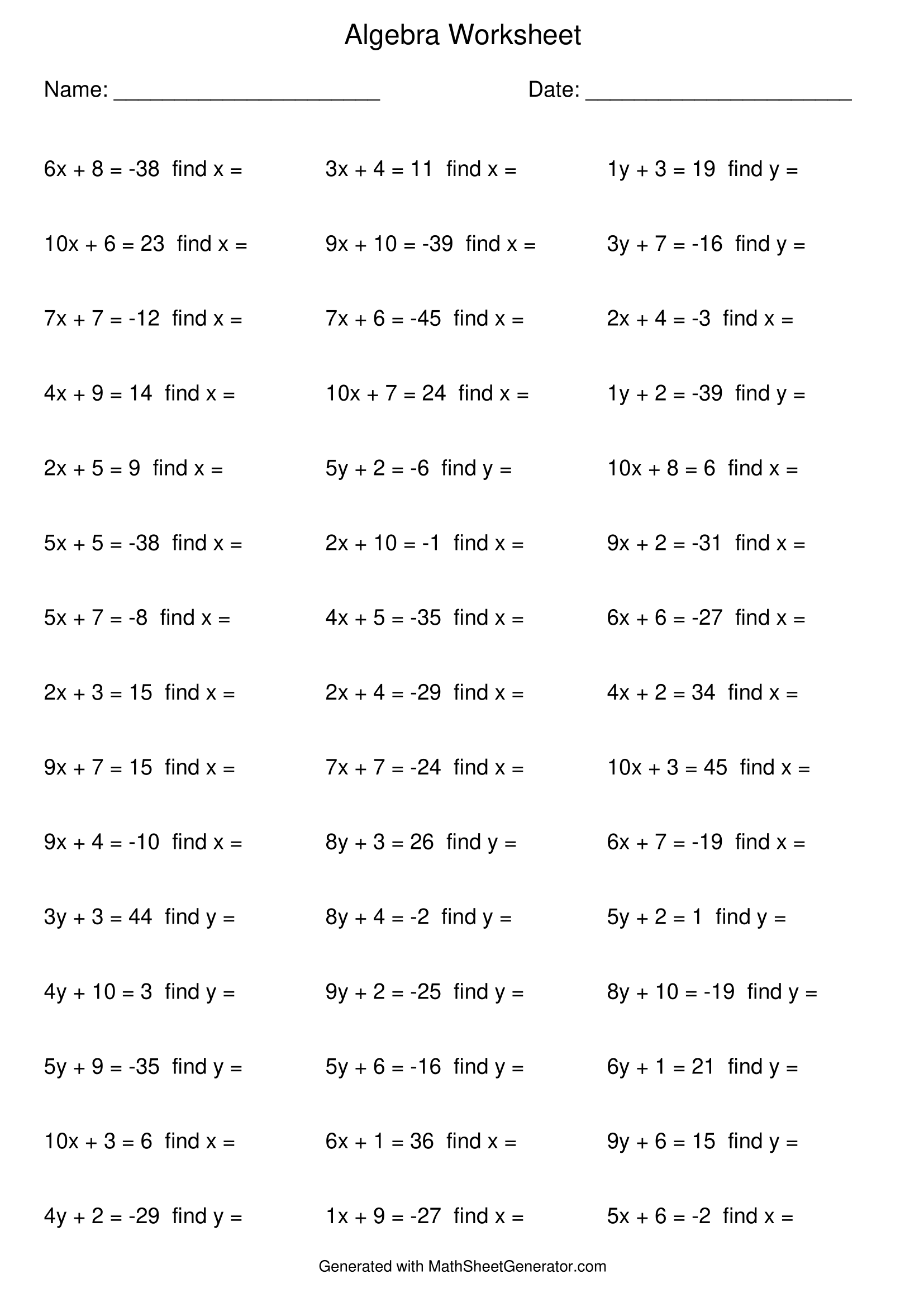
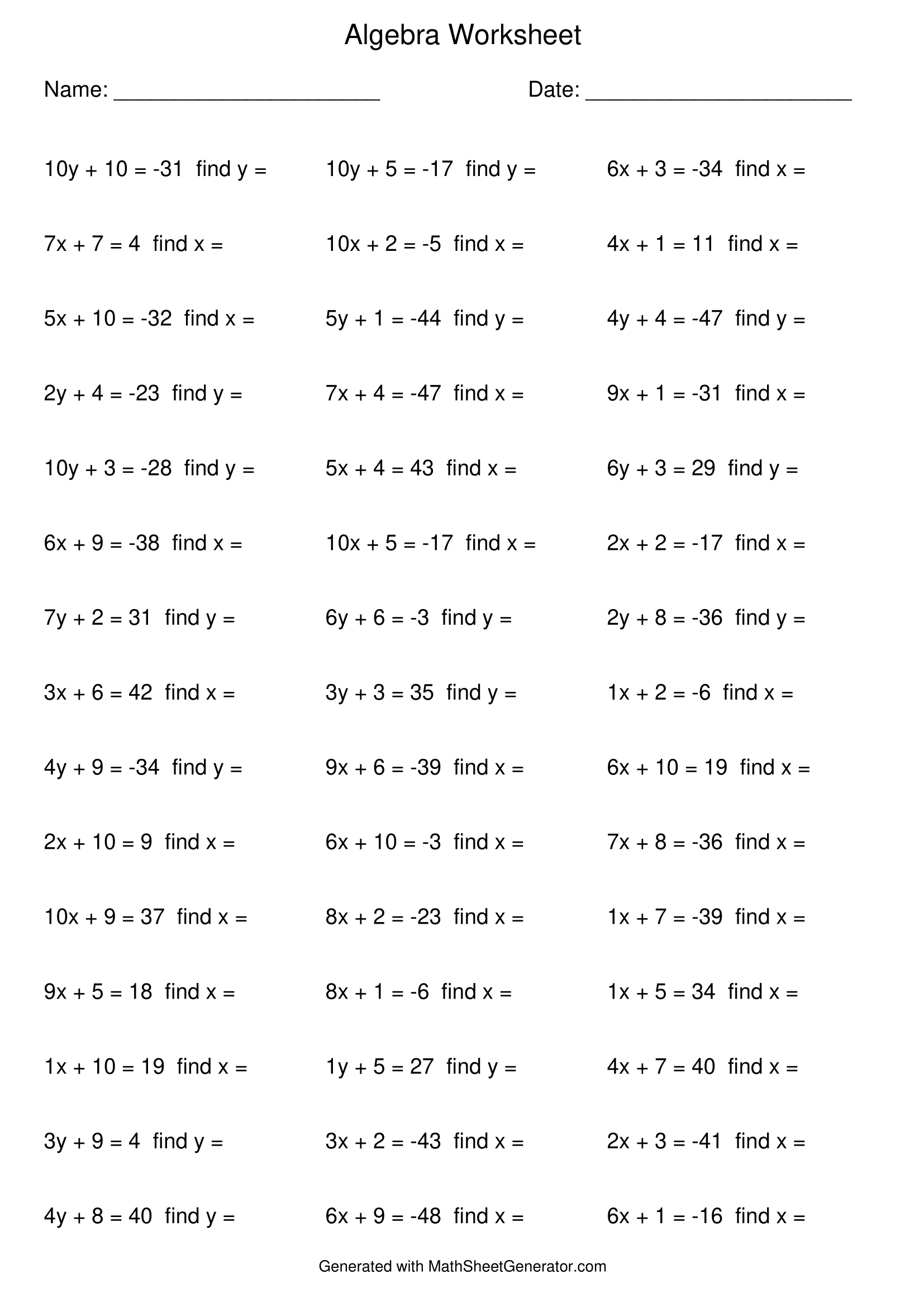
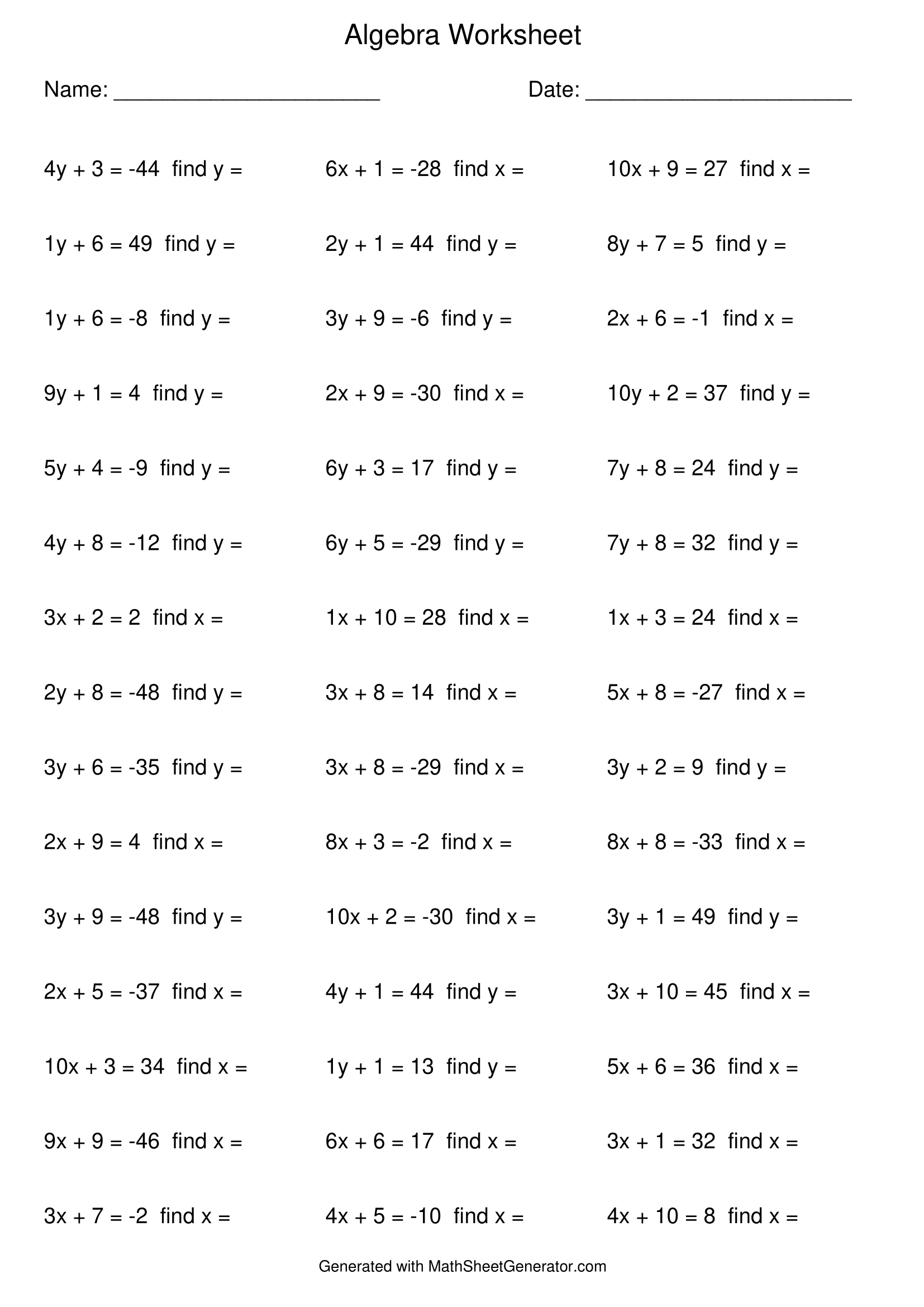
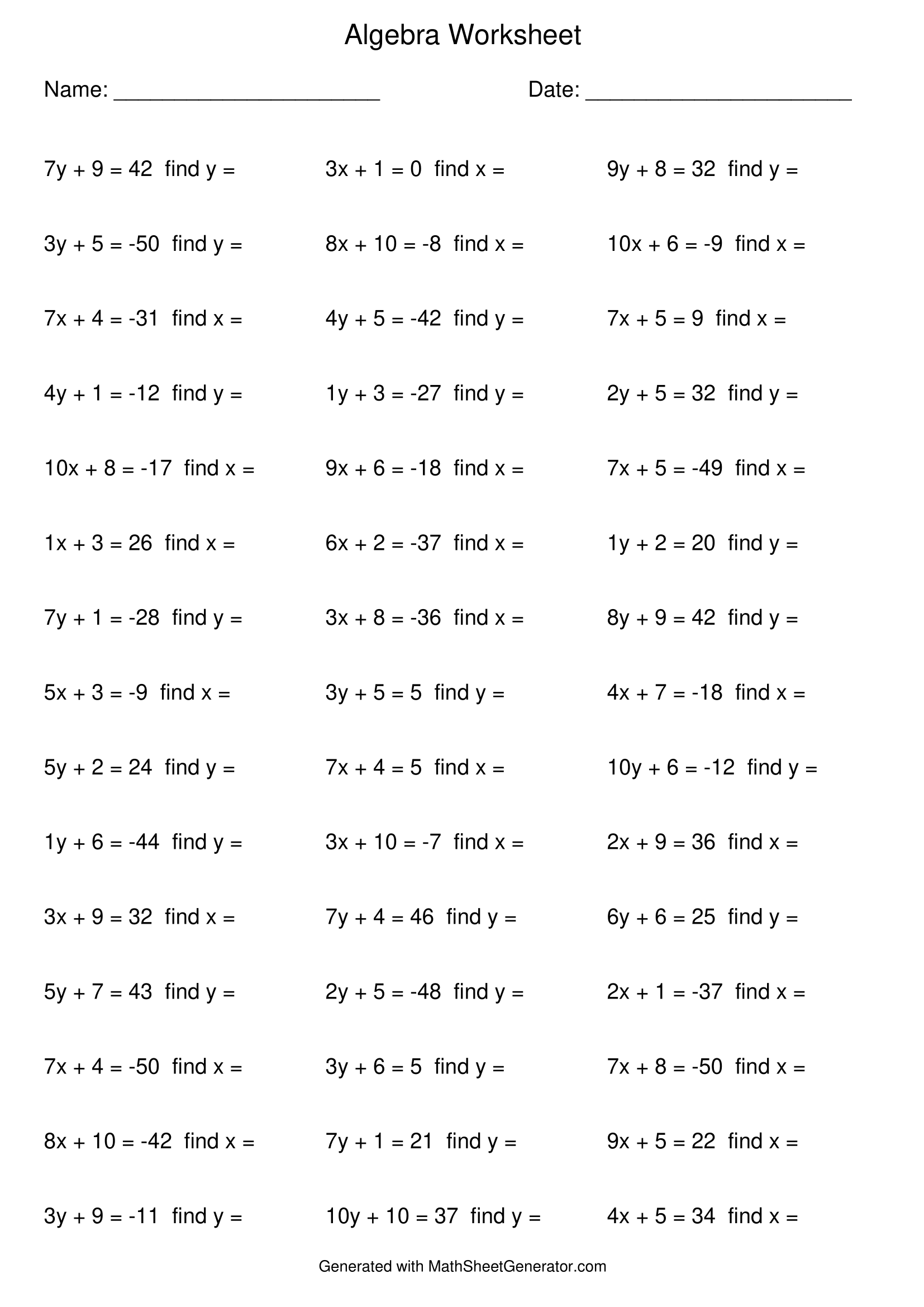
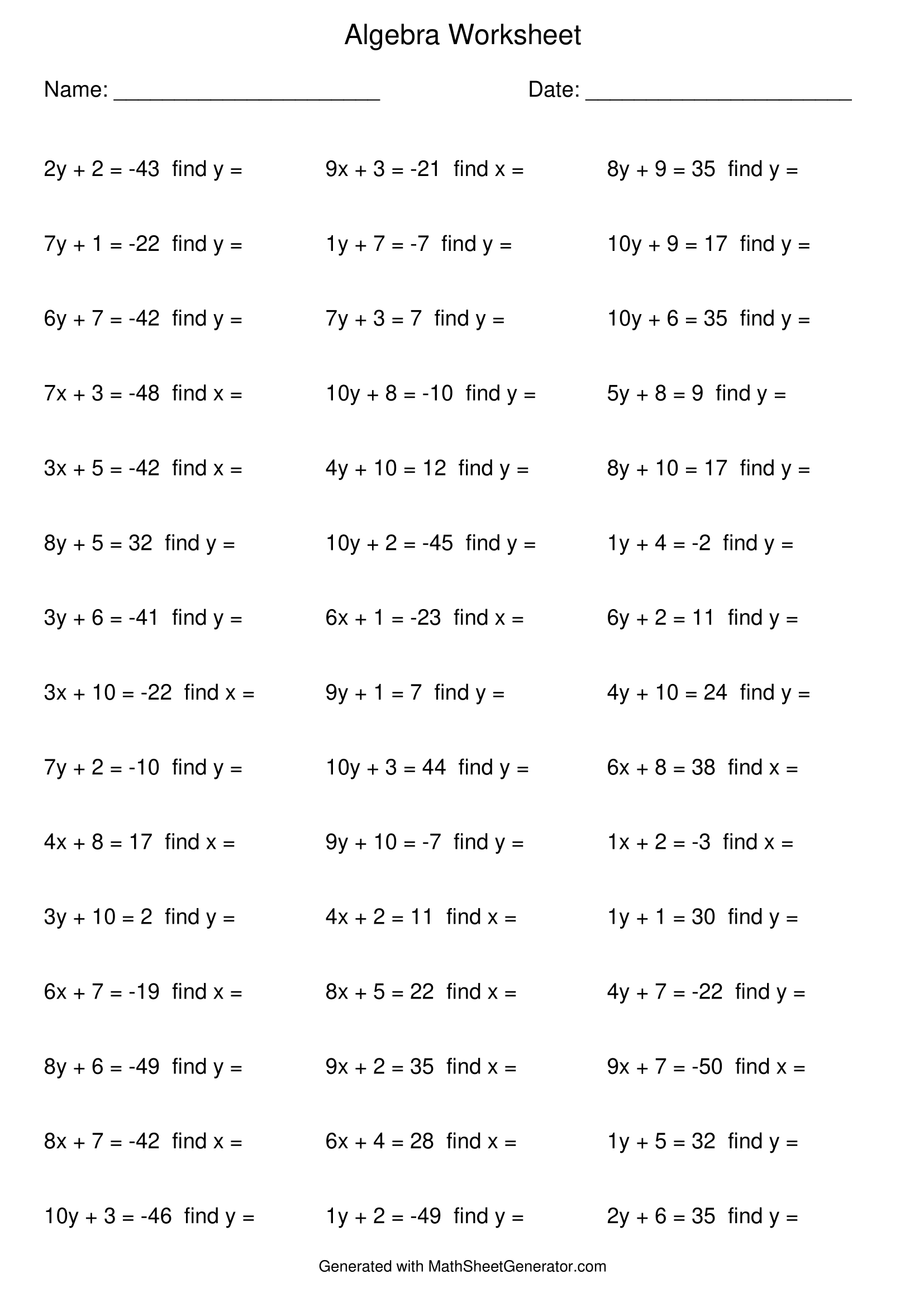
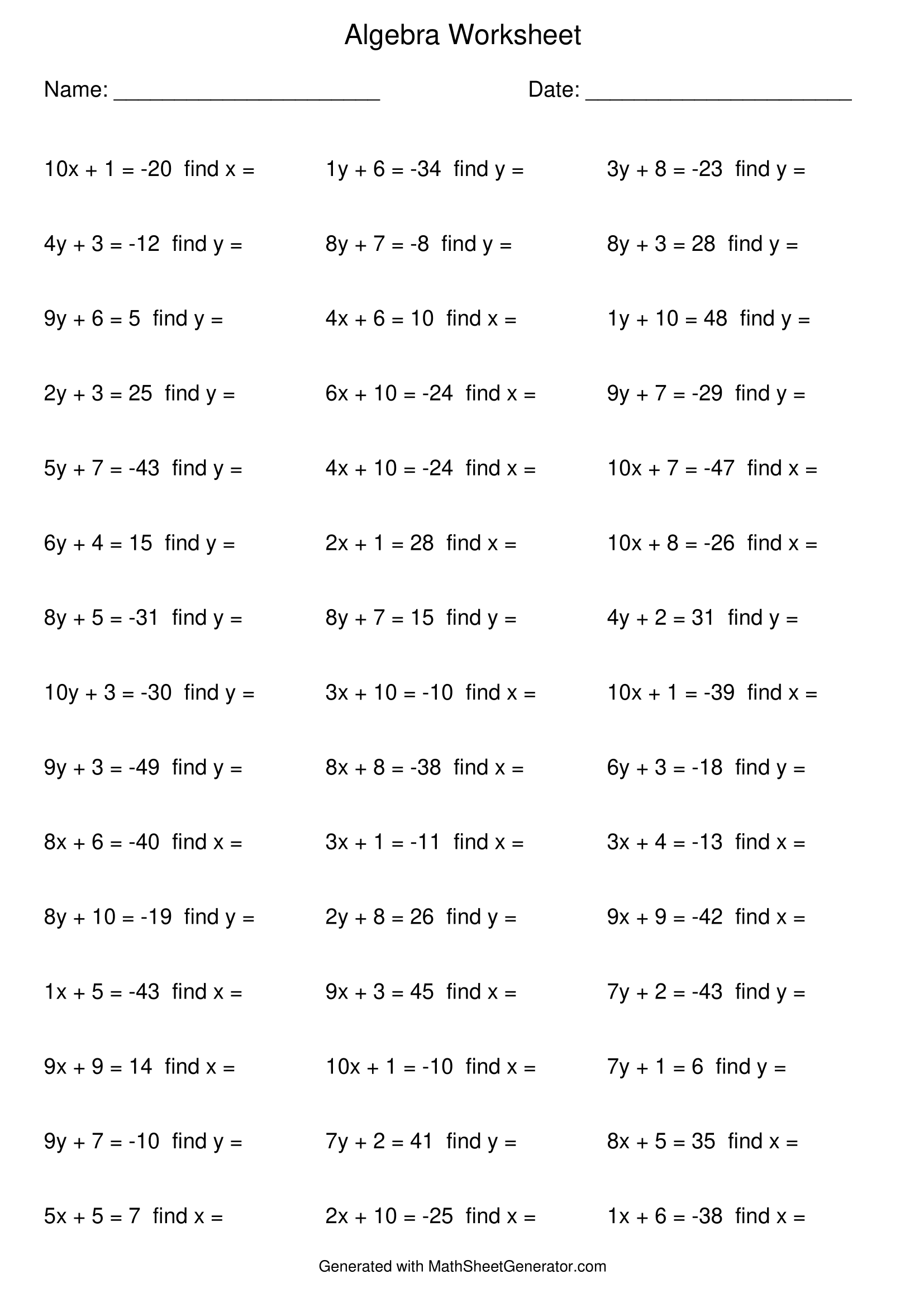
Leave a Reply Cancel reply